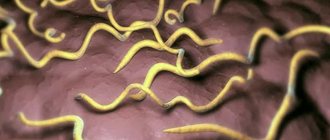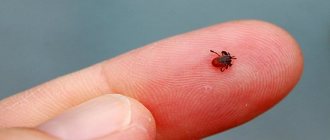Hydrocephalus in dogs is an extremely serious disease that causes disturbances in brain function. This disease poses a mortal danger to animals. Violations of basic brain functions, as a rule, are reflected in the dog’s behavior and do not go unnoticed by the owners. This allows you to diagnose the disease in the early stages and stop its further development. Nowadays, hydrocephalus is no longer a final and irrevocable sentence. The main thing is to promptly recognize the signs of the disease and provide adequate treatment.
Hydrocephalus in dogs: signs and treatment
What is hydrocephalus in dogs?
Hydrocephalus is a violation of the circulation of the fluid that washes the brain (cerebrospinal fluid). Cerebrospinal fluid is formed in its ventricles and circulates through the outflow canals, gradually being absorbed into the tissues. The accumulation of cerebrospinal fluid inside the skull significantly increases local pressure. This leads to the degradation and death of nerve cells that ensure the full existence of the animal. more about blood pressure and its effect on the dog’s body on our portal.
Hydrocephalus prevents the animal from fully developing
Diagnostics
To make a diagnosis and prescribe treatment, the veterinarian carries out certain diagnostic measures. In addition to a visual examination of the animal, the specialist will need to take tests of urine, blood, and cerebrospinal fluid. If the fontanelle is open, an ultrasound examination is performed.
If we are talking about acquired hydrocephalus, encephalography and radiography are mandatory to establish the degree of brain damage and assess its functioning. In some cases, the computed tomography method is used. It is used in cases where it is not possible to accurately establish the picture of the disease.
Causes of hydrocephalus
Hydrocephalus can develop in both open (compensated) and closed forms (occlusive). The closed form is usually congenital. In such cases, the puppy is born with abnormally narrowed ducts through which the cerebrospinal fluid moves. The reasons for the development of pathology are not fully understood. Basically, the development of congenital occlusive hydrocephalus is associated with genetic failures or intrauterine infection. The congenital form of hydrocephalus most often appears between the ages of 1 month and 1 year. Moreover, against the background of stress or complex diseases, the disease can develop in adulthood.
Most often, the disease manifests itself in dogs at a very early age.
Acquired hydrocephalus appears against the background of other diseases, the course of which leads to damage to the ducts. The main reasons for the development of acquired hydrocephalus are:
- head injuries;
- oncology;
- infectious diseases.
Compression of the brain leads to the gradual death of nerve cells
Injuries received by a dog can provoke the appearance of hematomas in the brain. Thus, the brain tissue is displaced under the pressure of the blood clot, and the duct narrows. Oncological diseases act in the same way as hematomas. Tumors, both malignant and non-malignant, mechanically disrupt the circulation of the cerebrospinal fluid. As a result of infections, foci of inflammation appear, which subsequently transform into scars and thickening of brain tissue.
Certain breeds with specific skull structures are predisposed to hydrocephalus
Causes of pathology
Depending on the cause, the disease can be congenital or acquired. In the first case, the circulation of cerebrospinal fluid is disrupted due to:
- abnormally narrowed ducts (ventricles of the brain);
- excessively active secretion;
- intrauterine infection.
Symptoms of congenital pathology appear from 1 month to 1 year. Later detection is typical for the acquired type, when damage to the ducts is explained by the following reasons:
- traumatic brain injuries that displace brain tissue under the pressure of hematomas;
- infections accompanied by inflammatory processes;
- neoplasms that increase intracranial pressure.
Treatment of hydrocephalus in dogs is successful only in the initial stages - until irreversible complications appear. The earlier the first symptoms are detected, the greater the chance of a favorable prognosis.
Signs of disease development
It is easy for an attentive owner to notice warning signs. The first signs may appear when the puppy reaches one month of age. If you can identify the disease at an early stage, you can successfully resist its development and save the life of your pet.
The earlier the puppy is diagnosed, the higher the chance of stopping the development of the disease.
Symptoms that should alert the owner:
- unnatural head position;
- convulsions;
- disturbance of consciousness and perception of space;
- divergence of eyes;
- behavior uncharacteristic for an animal;
- impaired coordination of movements;
- deformation of the skull.
One of the most common symptoms that may indicate hydrocephalus is the dog's confused movement in a circle. The animal wanders or runs as if chasing its tail. At the same time, it does not notice anything in its path and, having encountered any obstacle, stubbornly tries to continue moving along the established trajectory.
An ordinary action in the life of a healthy dog becomes a constant ritual for a puppy with hydrocephalus.
No less often, hydrocephalus is accompanied by convulsions that affect the entire body or only the limbs. It happens that the cramp is repeated only on one paw. In addition, pets with developing hydrocephalus may suddenly fall to the floor with their head thrown back. The animal remains in this position for a long time.
Seizures in dogs with hydrocephalus resemble epileptic seizures
In this state, the dog may squeal, whine and twitch, but is unable to rise or change body position. In between attacks, you can notice that the animal's head is constantly leaning to one side.
Symptoms of hydrocephalus include not only an enlarged skull, but also behavioral abnormalities
In addition to external manifestations, the dog develops behavior that was not typical for it before. The dog suddenly becomes aggressive and rushes around the apartment, biting and tearing everything he can reach. While running, he may bump into pieces of furniture without noticing them. Such states are replaced by complete apathy, when the animal lies, indifferently staring at one point, and does not react to external stimuli. The dog does not respond to the owner’s voice and refuses water and food.
Strabismus with hydrocephalus
With further development of the disease, an increase in intracranial pressure provokes a disproportionate increase in the animal's head. The skull becomes large and convex, while the rest of the body is emaciated. The animal's limbs become thin and weak. During this period, the development of strabismus is often observed. The pupils begin to diverge in different directions, or one of them is directed upward and the other downward.
If any of the listed symptoms appear, the animal must be immediately shown to a veterinarian and an appropriate examination must be carried out.
Intracranial pressure in dogs: the problem cannot be ignored
Contents hide
It’s been a while since we’ve looked at the blog of “all-America veterinarian” Dr. Marty Becker. Over the past month, readers have asked the doctor many interesting questions. As always, Dr. Becker gave simple but insightful advice and recommendations. Conciseness, lack of scientific vocabulary, and persuasiveness are the main components of the success of the books and articles of this world-famous specialist.
We quote the reader’s letter: “Doctor, help. Yesterday my dog behaved very strangely, staggered when walking, circled, pressed his head against the wall. Tell me, is this dangerous? What should I do?"
Dr. Marty Becker answers. “I suspect your pet has a serious problem called “increased intracranial pressure.” There are actually several reasons for intracranial pressure (and such strange behavior of the dog), the most possible being liver disease, poisoning and the consequences of injury. I advise you to go to the veterinarian as soon as possible, who will make a final diagnosis.
What liver disease are we talking about? I will mention the so-called hepatic shunt - a relatively rare anomaly, which is associated with an abnormal connection of the branches of the portal vein, as a result of which they bypass the liver. In other words, blood from the intestines does not flow to the liver, where it is cleared of toxins. Most often, hepatic shunt is diagnosed in dogs of medium-sized breeds - Maltese and Yorkshire terriers, but sometimes it occurs in larger animals. It should be emphasized that the disease is usually characteristic of young dogs.
Older dogs develop cirrhosis of the liver, and not at all because they are addicted to alcohol. The reason, as a rule, lies in one or another internal infection. Long-term use of a number of medications also causes liver cirrhosis in dogs.
Increased intracranial pressure in dogs, as noted above, is often caused by banal poisoning: lead, herbicides, insecticides (including poisons for rodent pests), fungi of the Amanitaceae family, blue-green algae, etc. - the list goes on. However, poisoning causes not only increased intracranial pressure, but also other symptoms: lethargy, loss of appetite, depression, convulsions, etc.
Let us also note encephalitis, as well as inflammatory processes in the brain - and they can make their sad contribution.
Your pet may have suffered a serious injury, such as from a fall or being hit by a car. Some details can easily escape your attention, don’t forget.
Dogs press their heads against a wall or any other hard surface due to a neck injury, a herniated disc, or a developed brain tumor.
As you can see, the problem cannot be ignored - urgently take your pet to see a veterinarian. The doctor will prescribe a range of tests, including MRI or positron emission tomography (PET). The treatment will be long and quite expensive - medicinal or surgical. The animal may need rehabilitation.”
Original : Don't ignore head pressing in dogs. Author : Dr. Marty Becker. Source : drmartybecker.com Photo: pixabay.com
Hydrocephalus in large dogs
In dogs of large and medium breeds, hydrocephalus is detected quite rarely and as a concomitant disease with other pathologies. The development of the disease is mainly associated with injuries or tumors. Even with advanced forms of hydrocephalus, large dogs do not experience skull deformation. Other symptoms persist.
Large breeds are not predisposed to congenital hydrocephalus
Symptoms of the disease
The manifestation of the congenital disease, visible to the naked eye, can be detected within 2-3 weeks after the birth of the puppies. However, acquired hydrocephalus in dogs can manifest itself much later. The most striking signs of pathology, according to experts, include:
- inappropriate behavior, expressed in the fact that the dog can start circling in one place for no reason, unnaturally throw back its head and twist it in different directions;
- vision is impaired, the dog begins to clearly cross his eyes;
- seizures occur that are in many ways reminiscent of epileptic seizures;
- the shape and size of the skull changes, it becomes larger, acquires a spherical shape, cranial sutures are clearly visible under the skin;
- hydrocephalus causes the dog to become aggressive. When the owner tries to play with him, he may growl at him and even bite him.
Hydrocephalus in small breed dogs
Small dogs, such as Chihuahuas and Yorkies, are at risk of developing hydrocephalus. With a relatively large brain size, their skull is quite small, which causes the problem. The disease develops mainly in puppies. In adults over 1 year of age, hydrocephalus occurs after head trauma or cancer.
Dogs at risk are chihuahuas, pugs, and Yorkshire terriers.
Diagnosis of hydrocephalus in dogs
After symptoms of hydrocephalus appear, it is important to show the animal to a veterinarian as soon as possible. The presence of characteristic signs is not yet proof of this particular disease. After a general examination, the doctor prescribes additional procedures to make an accurate diagnosis.
Collecting cerebrospinal fluid from an animal visually
Diagnosis of hydrocephalus is carried out using:
- ultrasound examination;
- MRI;
- computed tomography;
- cerebrospinal fluid analysis.
After conducting research, the veterinarian will make an accurate diagnosis and prescribe appropriate treatment.
Brain scan of a dog with hydrocephalus
Symptoms and diagnosis of hydrocephalus
It is not difficult to understand that a pet has developed a pathology such as hydrocephalus. The disease is characterized by severe symptoms, which are difficult to confuse with other diseases. The basic signs of hydrocephalus are:
- vision problems in puppies aged 4-6 weeks (easily confused with strabismus);
- a sharp change in the shape and size of the pet’s skull;
- convulsive phenomena, seizures as in epilepsy;
- behavioral problems - apathetic states or manifestations of unmotivated aggression;
- making unusual movements - throwing back the head, spinning in a circle.
A sick animal is different from its relatives from the same litter. The skull bones are larger, the pelvic and thoracic limbs are disproportionately thin.
Making an accurate diagnosis is necessary to select the most adequate treatment. When visiting a veterinary clinic, a sick puppy undergoes a series of tests. Be sure to conduct a general clinical examination and collect anamnesis. Appointed:
- general clinical and biochemical blood tests;
- collection of cerebrospinal fluid for diagnostics;
- ultrasound diagnostics (possible in the case of an open fontanel).
For acquired hydrocephalus, in addition to the above studies, radiography and encephalography are performed. X-ray examination allows us to determine the degree of brain damage, and encephalography makes it possible to assess the ability to work. If it is not possible to establish the cause of hydrocephalus, a computed tomography scan is recommended. Unfortunately, this procedure is not available in all veterinary clinics.
Treatment of hydrocephalus
Hydrocephalus is a disease that cannot be completely cured. However, the means available to doctors make it possible to contain the disease for many years. Based on the indications, the veterinarian may prescribe drug treatment aimed at reducing intracranial pressure. For this, diuretics, glucocorticoids and antibiotics are used.
Table. Drugs against hydrocephalus
| Name | Action | Reception frequency | Dosage |
"Prednisol" | Relieves swelling, reduces fluid production in the body | 2 times a day | 0.5 mg per kilogram of weight |
"Furosemide" | Diuretic | Every 6 hours | 10 mg per kilogram of weight |
The dose of drugs is gradually reduced, reducing it to nothing. Long-term treatment with diuretics can lead to the development of serious pathologies in the animal’s body.
The more accurately the timing of taking medications is observed, the better the effect of treatment will be.
Medicines against hydrocephalus work with symptoms, but do not relieve the animal from the disease
It is impossible to cure hydrocephalus with medication alone. In rare cases, in this way it is possible to achieve a relatively stable remission, but with the slightest stress the disease goes into the acute phase.
Surgery
Drug treatment usually precedes surgery. By reducing blood pressure, the chances of a successful operation increase significantly. Ventriculoperitoneal shunting is used for the surgical treatment of hydrocephalus. The essence of the method is simple. A thin, flexible tube with a pump is placed into the dog's brain where cerebrospinal fluid accumulates. The drainage tube is placed under the animal's skin, passes through the chest and is discharged into the abdominal cavity.
Installation of a drainage tube in the brain
In this way, excess fluid is removed from the skull and absorbed into the surface of the internal organs. As a result, intracranial pressure decreases, the unpleasant symptoms that accompanied the disease disappear, and the animal’s quality of life improves.
Bypass process
Video - Shunting for hydrocephalus
When should surgery not be performed?
The operation cannot be performed if the animal is severely emaciated or has acute infectious diseases. In this case, surgery is postponed until the infection is cured or the required weight has been gained. If the disease was detected late and the dog’s skull was already severely deformed at the time of examination, surgical intervention no longer makes sense. In this case, the animal is euthanized to save it from suffering.
If there is a severe deformation of the dog’s skull, surgery is powerless
Hydrocephalus, despite the fact that the disease is a serious pathology, can be quite successfully controlled in the early stages. Timely detection of disease symptoms and timely diagnosis are not a death sentence. Carrying out therapeutic measures will extend the life of your pet for many years. The main thing is to be an attentive owner and notice any changes in behavior that were previously unusual for the dog.
Treatment
During the period of acute neurological disorders, a number of drugs are used to reduce the production of cerebrospinal fluid and lower pressure - prednisolone, furosemide, acetazolamide. The exact dosage and duration of therapy depends on the condition of the animal.
If drug treatment is ineffective and acute symptoms persist even after completing the course, ventriculoperitoneal shunting is used - a surgical intervention that provides a significant improvement in the dog’s condition.
This operation consists of inserting a special drainage tube that connects the cavity of the cerebral ventricles and the abdominal cavity. Thus, excess cerebrospinal fluid is removed from the cerebral ventricles, and pressure in the brain is reduced.
X-ray of a dog after installation of a ventriculoperitoneal shunt
Prognosis for hydrocephalus in dogs
Hydrocephalus is a serious disease; there can be no favorable prognosis for such a pathology. After the operation and installation of a shunt, doctors limit themselves to kept promises. Otherwise, if surgical treatment is refused, the dog will face a long and painful death.
Despite the presence of a shunt in a dog, any head injury can cause remission
Bypass surgery is currently the only effective method of controlling the disease. The pet’s well-being improves by 90% after installing drainage. The dog is able to continue a normal, albeit somewhat limited, existence.
If the shunt is damaged or fails, repeat surgery is necessary.
The shunt is installed for life, unless it fails and a second operation is required to replace the drain. With timely diagnosis and surgery in the early stages of the disease, the dog can live quite a long time.
Can hydrocephalus be cured?
In practice, when diagnosing hydrocephalus, situations are ambiguous. In case of acquired pathology, its cause is affected and the excess amount of cerebrospinal fluid is removed. Diuretics, anticolvulsants, steroidal anti-inflammatory drugs, etc. are prescribed. Antibiotics are justified when a bacterial infection is detected.
With congenital hydrocephalus, the course of the disease is complex and surgical intervention is required. An artificial vessel (shunt) is created, through which excess cerebrospinal fluid is drained into the abdominal cavity.
Secondary hydrocephalus, once the pet has been stabilized, will require symptomatic lifelong treatment. In case of congenital pathology, it is important not to waste time and contact a veterinary neurologist quickly in order to exclude the development of irreversible changes in the central nervous system.
The prognosis for the disease depends on concomitant congenital anomalies, successful stabilization of the pet with secondary pathology, the presence/absence of tumors, hemorrhages in the brain and the results of surgery to form a shunt. In any case, there is always a chance for a relatively normal existence for the dog, and the veterinarian uses it.











